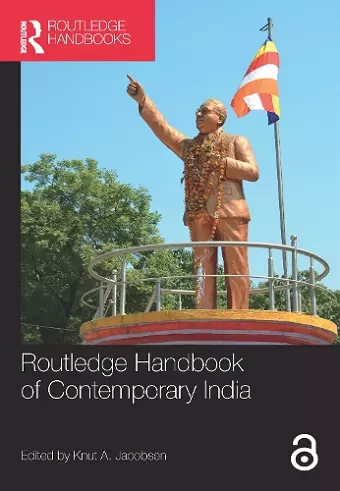Routledge Handbook of Contemporary India
Format:Paperback
Publisher:Taylor & Francis Ltd
Published:29th May '18
Currently unavailable, and unfortunately no date known when it will be back

India is the second largest country in the world with regard to population, the world’s largest democracy and by far the largest country in South Asia, and one of the most diverse and pluralistic nations in the world in terms of official languages, cultures, religions and social identities. Indians have for centuries exchanged ideas with other cultures globally and some traditions have been transformed in those transnational and transcultural encounters and become successful innovations with an extraordinary global popularity. India is an emerging global power in terms of economy, but in spite of India’s impressive economic growth over the last decades, some of the most serious problems of Indian society such as poverty, repression of women, inequality both in terms of living conditions and of opportunities such as access to education, employment, and the economic resources of the state persist and do not seem to go away.
Now available in paperback, this Handbook contains chapters by the field’s foremost scholars dealing with fundamental issues in India’s current cultural and social transformation and concentrates on India as it emerged after the economic reforms and the new economic policy of the 1980s and 1990s and as it develops in the twenty-first century.
Following an introduction by the editor, the book is divided into five parts:
- Part I: Foundation
- Part II: India and the world
- Part III: Society, class, caste and gender
- Part IV: Religion and diversity
- Part V: Cultural change and innovations.
Exploring the cultural changes and innovations relating a number of contexts in contemporary India, this Handbook is essential reading for students and scholars interested in Indian and South Asian culture, politics and society.
Included in Editors’ Top 75 Community College Resources for June 2016 from CHOICE
"Routledge continues to make a remarkable contribution to South Asian studies through its journals, monographs, and edited books. This is another volume that South Asianists will embrace. Jacobsen and his international, five-member editorial board have divided the 32 chapters into five sections: "Foundation", six chapters on various topics from partition to the economy and the constitution; "India and the World" (six chapters); "Society, Class, Caste and Gender", eight chapters on topics large and small; "Religion and Diversity", eight chapters, including coverage of Hindu pilgrimage sites, Ambedkar, Muslims, and Christians; and "Cultural Change and Innovations", whose four chapters deal with femininity, the "new Indian male", food, and Siddha medical knowledge. In short, topics that appeal strongly to postmodernists and postcolonialists, written in language using terminology that appeals to them. The editor's introduction summarizes the volume's contents and writes about population and economic growth. [...] this is a major contribution. Highly recommended. All levels/libraries." R. D. Long, Eastern Michigan University, CHOICE
ISBN: 9781138313750
Dimensions: unknown
Weight: 934g
506 pages